In Illinois, nine woodpecker species contribute to the state’s rich avian tapestry, each with its unique characteristics and ecological roles.
From the impressive Pileated Woodpecker to the elusive Black-backed Woodpecker, these birds carve their niche in the diverse landscapes.
Explore the woodlands, parks, and suburban areas to witness these feathered drummers’ vibrant plumage, distinctive calls, and fascinating behaviors.
This exploration into the world of Illinois woodpeckers unveils their significance in maintaining ecosystem balance and underscores the importance of conservation efforts to preserve their habitats.
Join us on a journey to discover the captivating lives of these nine woodpecker species that call Illinois home. So, stay sharp.
9 Woodpeckers in Illinois
Woodpeckers in Illinois play a crucial ecological role by controlling insect populations. Their foraging activities help manage harmful pests, such as wood-boring beetles, contributing to the overall health of forest ecosystems.
Get into the diverse world of woodpeckers, a fascinating group of birds found in Illinois.
From the striking Pileated Woodpecker to the camouflaged Black-backed Woodpecker, each species brings its unique traits to the ecosystem.
Discover their scientific names, population statuses, habitats, and more as we delve into the lives of these feathered drummers in the woodlands of Illinois.
1. Pileated Woodpecker
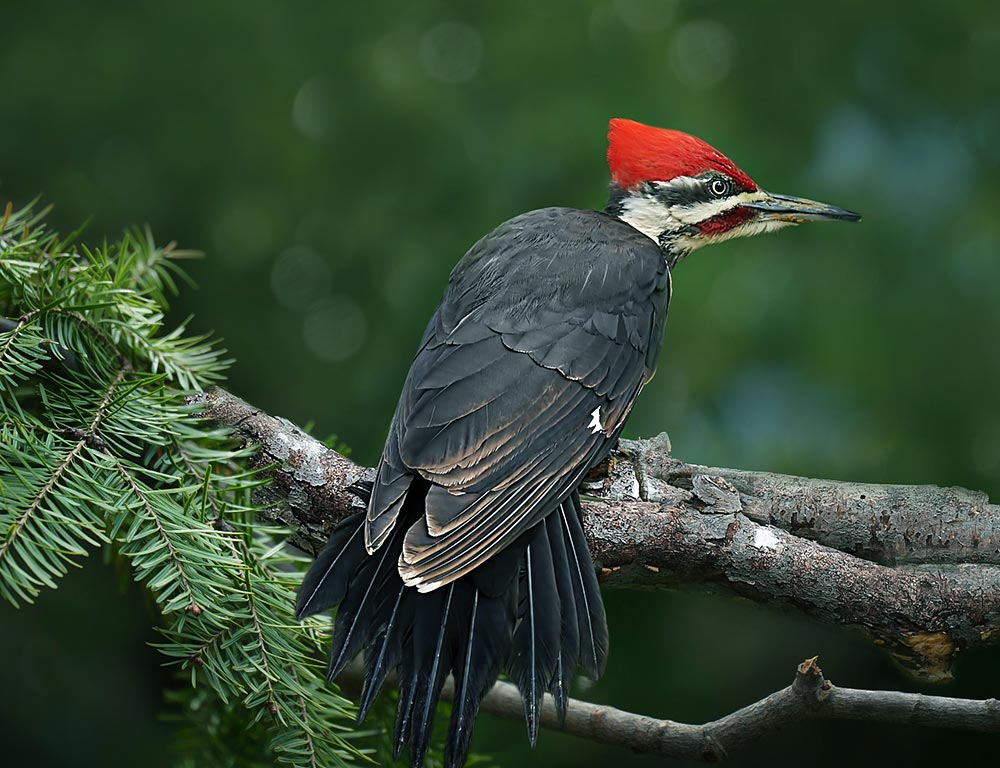
- Scientific Name: Dryocopus pileatus
- Category: Woodpecker
- Population: Stable
- Life Span: 4-12 years
- Size: 16-19 inches
- Weight: 8-12 ounces
- Food: Insects, fruits, and nuts
- Wingspan: 26-30 inches
- Status: Least Concern
The Pileated Woodpecker is an impressive bird characterized by its striking red crest, black body, and white stripes.
They inhabit mature forests in Illinois, and their large size and vibrant appearance make them easily noticeable. These woodpeckers have strong bills and a long, extensible tongue adapted for extracting insects from tree bark.
Their diet includes carpenter ants and beetle larvae found in decaying wood. Pileated woodpeckers are known for their loud drumming on trees to communicate, establish territory, and attract mates.
2. Downy Woodpecker
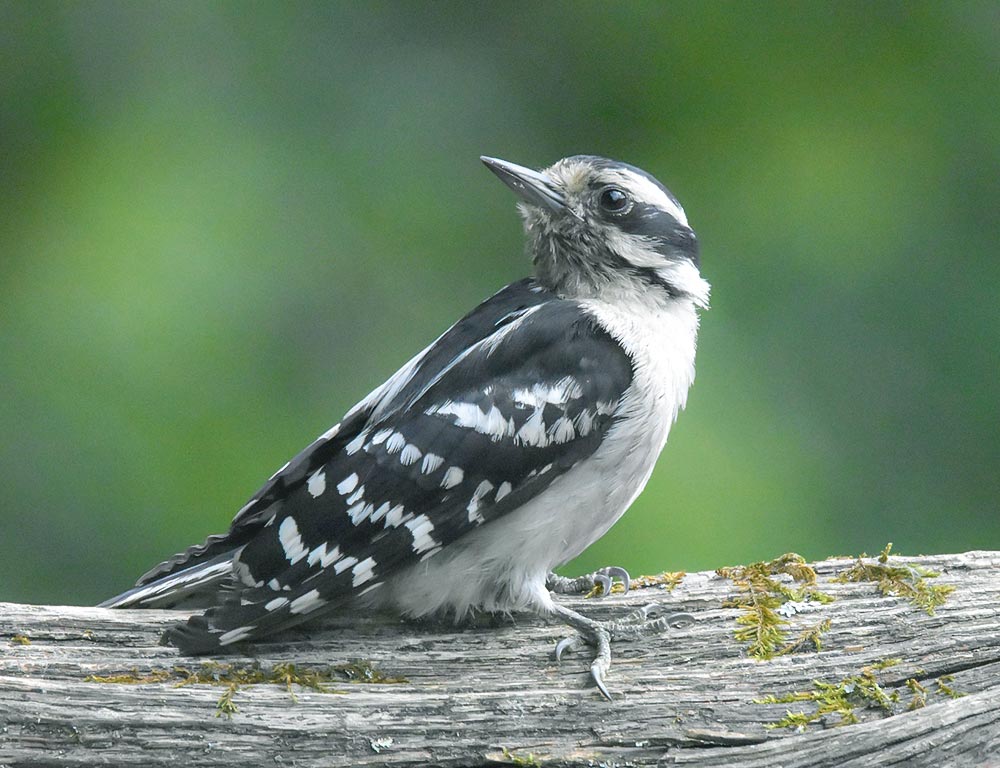
- Scientific Name: Picoides pubescens
- Category: Woodpecker
- Population: Common
- Life Span: 4-6 years
- Size: 5.5-7.1 inches
- Weight: 0.7-1 ounce
- Food: Insects, seeds, berries
- Wingspan: 9.8-12.2 inches
- Status: Least Concern
The Downy Woodpecker is the smallest and most common woodpecker in North America.
Despite their diminutive size, they are energetic and easily adaptable. They can be found in various habitats in Illinois, including parks, woodlands, and suburban areas.
Downy woodpeckers forage for insects, seeds, and berries and often visit backyard feeders. Their distinctive black-and-white plumage and drumming sounds help in identification.
3. Red-headed Woodpecker
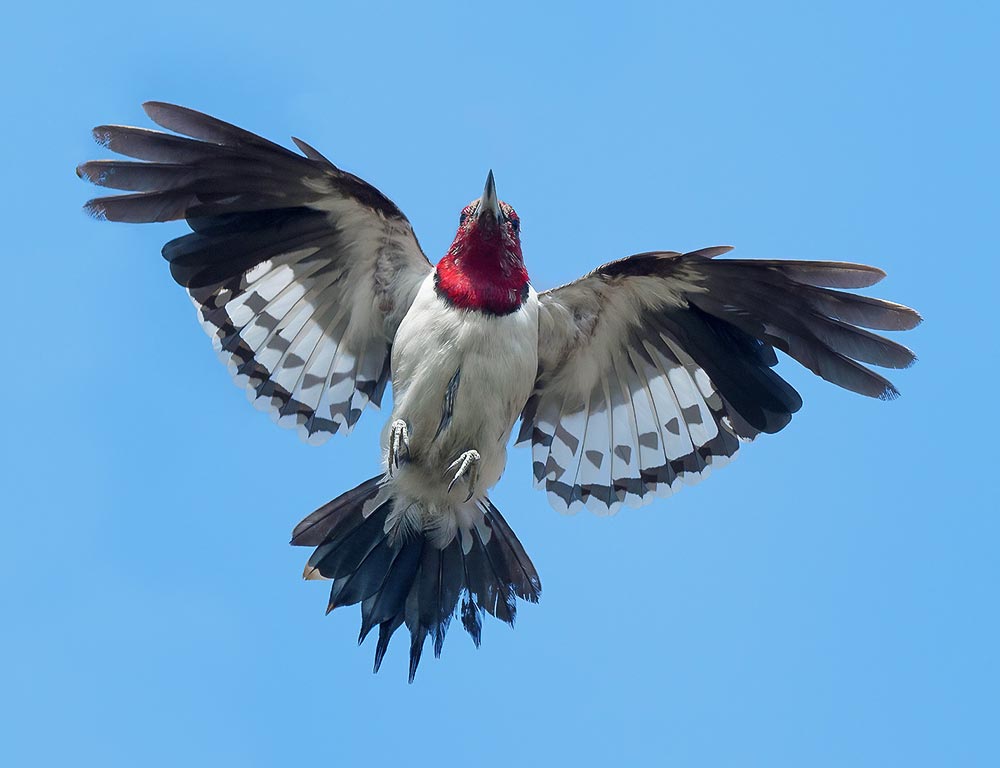
- Scientific Name: Melanerpes erythrocephalus
- Category: Woodpecker
- Population: Declining
- Life Span: 9-12 years
- Size: 7.5-9.1 inches
- Weight: 2.8-3.9 ounces
- Food: Insects, fruits, nuts, and seeds
- Wingspan: 16.5-17.7 inches
- Status: Near Threatened
The Red-headed Woodpecker is easily distinguished by its vibrant red head, white body, and black wings.
Sadly, their population is declining due to habitat loss and competition for nesting sites. In Illinois, they prefer open woodlands, savannas, and agricultural areas.
Red-headed woodpeckers are skilled at catching insects in flight and are known for storing surplus food by wedging it into crevices or tree bark.
Conservation efforts are crucial to preserving their habitat and ensuring their continued presence in the region.
4. Red-bellied Woodpecker
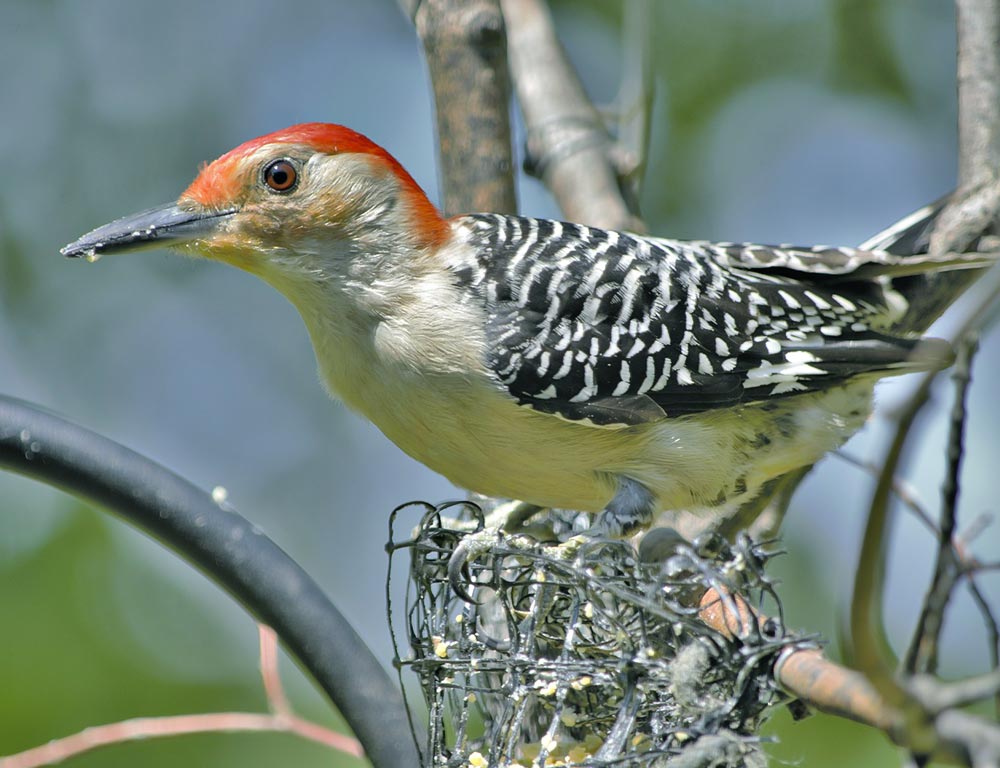
- Scientific Name: Melanerpes carolinus
- Category: Woodpecker
- Population: Stable
- Life Span: 9-12 years
- Size: 9-10.5 inches
- Weight: 2-3 ounces
- Food: Insects, fruits, seeds, and small vertebrates
- Wingspan: 13-16 inches
- Status: Least Concern
The Red-bellied Woodpecker is named for the faint red tint on its belly, which is often difficult to observe.
These woodpeckers are commonly found in woodlands, suburbs, and urban areas. They have a diverse diet that includes insects, fruits, seeds, and small vertebrates.
Red-bellied woodpeckers are skilled climbers and often feed on tree trunks and branches. Their distinctive call and vibrant plumage make them easily recognizable.
5. Northern Flicker
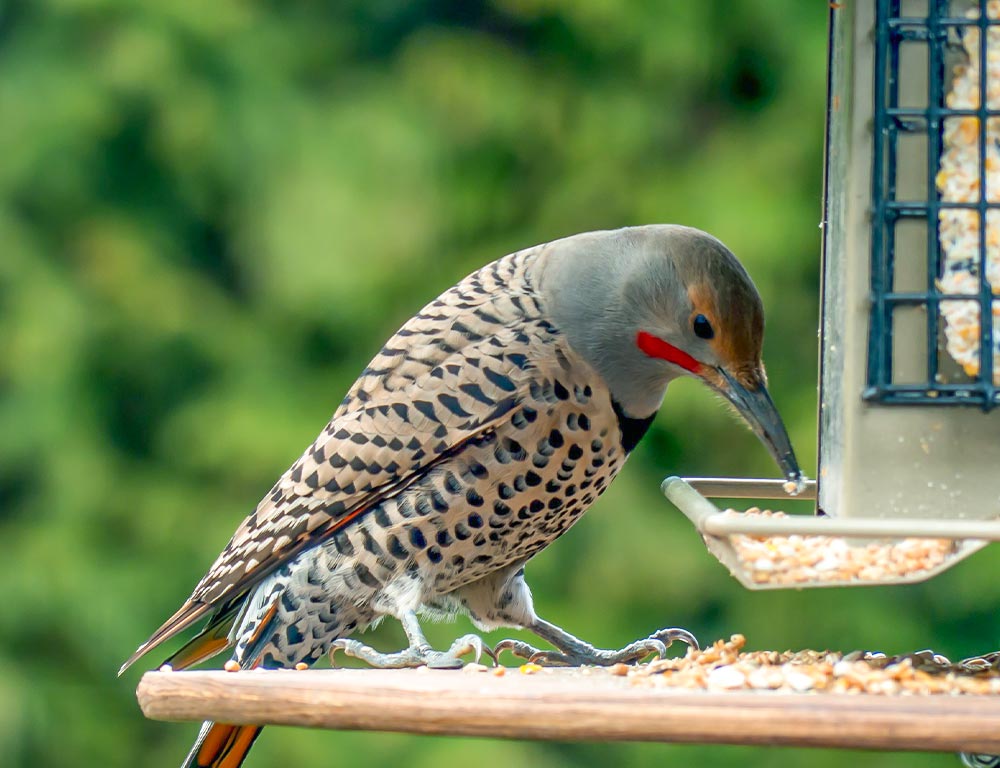
- Scientific Name: Colaptes auratus
- Category: Woodpecker
- Population: Stable
- Life Span: 6-11 years
- Size: 11-14 inches
- Weight: 3-5 ounces
- Food: Insects, ants, beetles, seeds, and berries
- Wingspan: 16-22 inches
- Status: Least Concern
The Northern Flicker is a medium to large woodpecker with distinctive spotted plumage. They are commonly found in open habitats, including woodlands, yards, and parks.
Northern flickers feed on the ground, using their slightly curved bill to extract ants, beetles, and other insects. They are known for their rhythmic drumming on trees during the breeding season and have a loud, piercing call.
6. Yellow-bellied Sapsucker
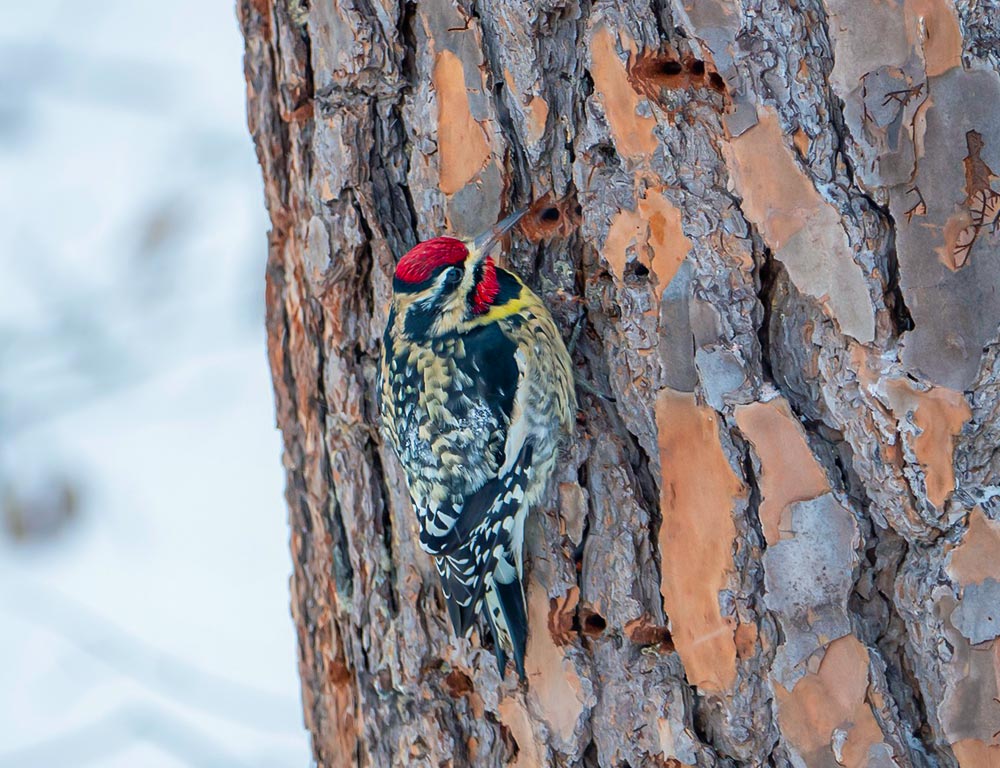
- Scientific Name: Sphyrapicus varius
- Category: Woodpecker
- Population: Stable
- Life Span: 4-7 years
- Size: 7-8.5 inches
- Weight: 1.5-2.4 ounces
- Food: Sap, insects, and tree fruits
- Wingspan: 13-16 inches
- Status: Least Concern
The Yellow-bellied Sapsucker is a migratory woodpecker with a unique feeding behavior.
They drill small holes in tree bark to feed on sap and insects attracted to the sap wells. In Illinois, they are found in various habitats, including forests and orchards.
Despite their name, the yellow belly may not be readily visible. They have a distinct mewing call, and their presence can be detected by the rows of evenly spaced holes on tree trunks.
7. Black-backed Woodpecker
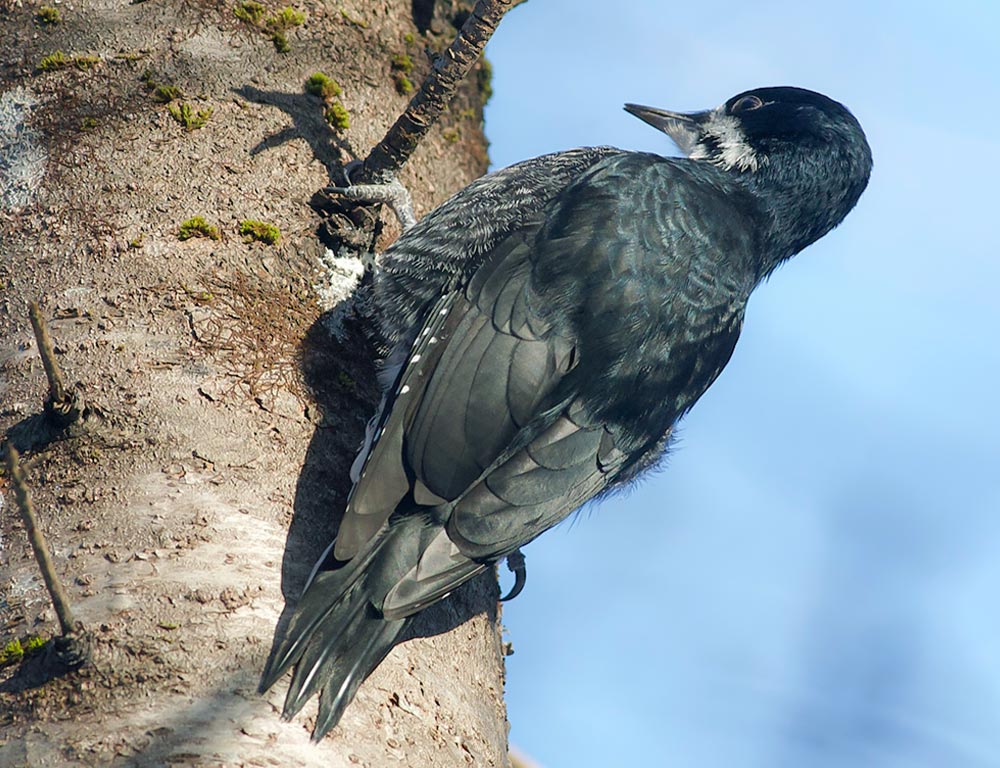
- Scientific Name: Picoides arcticus
- Category: Woodpecker
- Population: Stable
- Life Span: 4-7 years
- Size: 9-10.5 inches
- Weight: 2.5-3.5 ounces
- Food: Insects, especially wood-boring larvae
- Wingspan: 16-18 inches
- Status: Least Concern
The Black-backed Woodpecker is adapted to boreal and subalpine forests with a preference for recently burned or insect-infested areas.
Their black plumage, barred with white, provides excellent camouflage in charred landscapes.
Black-backed woodpeckers are specialized in foraging for wood-boring beetle larvae, making them important players in post-fire or infestation ecosystems.
Conservation efforts focus on preserving suitable habitats and recognizing their ecological role in maintaining forest health.
8. Williamson’s Sapsucker
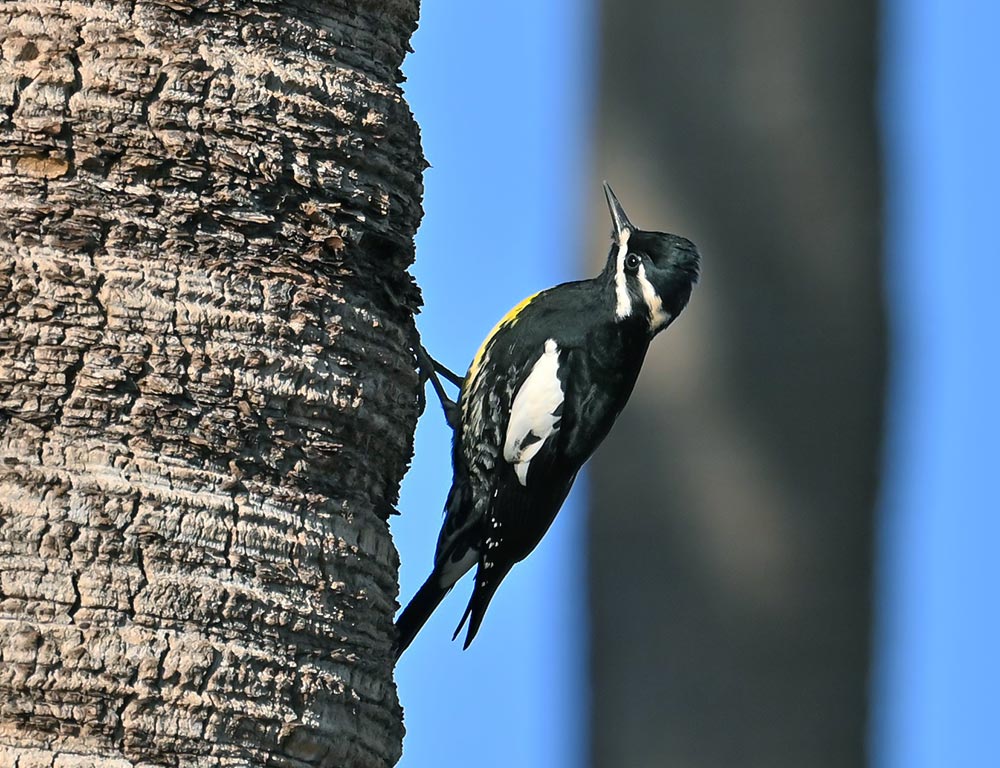
- Scientific Name: Picoides williamsonii
- Category: Woodpecker
- Population: Declining
- Life Span: 5-10 years
- Size: 8-9.5 inches
- Weight: 2.5-3.5 ounces
- Food: Tree sap, insects, and fruits
- Wingspan: 16-18 inches
- Status: Near Threatened
Williamson’s Sapsucker is known for its unique feeding behavior, creating sap wells in coniferous trees. They are typically found in montane forests, particularly in the western part of North America.
Their populations are declining due to habitat loss and competition for nesting sites. Conservation efforts involve protecting mature forests, preserving nesting habitats, and studying their migration patterns to address threats effectively.
9. Red-cockaded Woodpecker
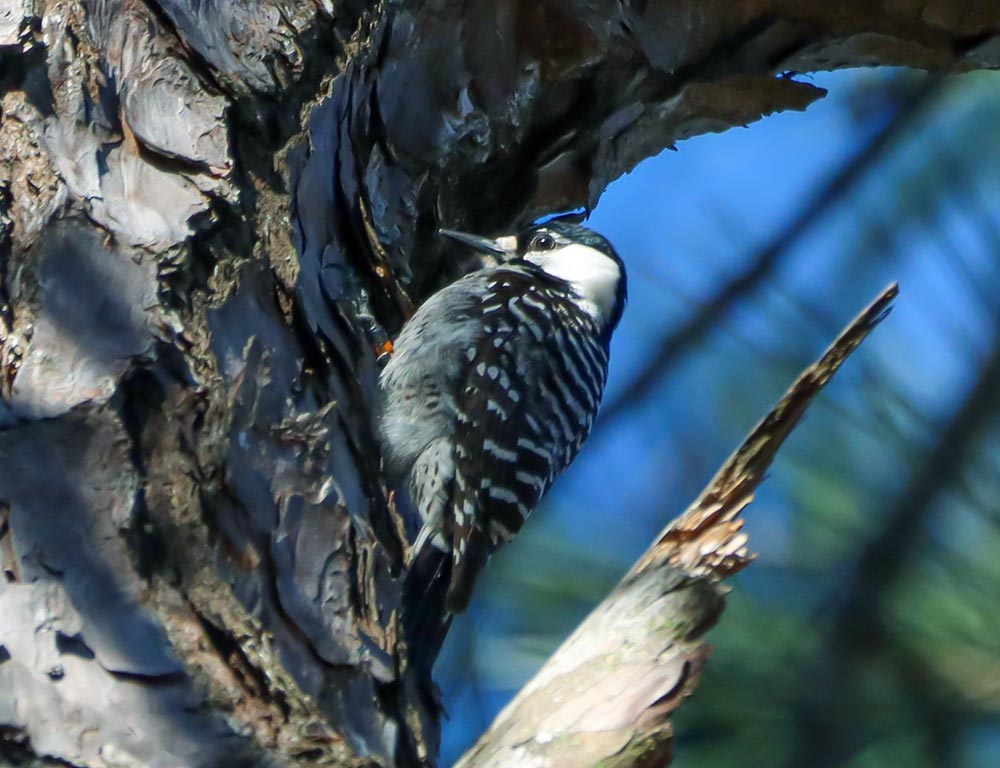
- Scientific Name: Picoides borealis
- Category: Woodpecker
- Population: Declining
- Life Span: 4-11 years
- Size: 7-9 inches
- Weight: 1-2 ounces
- Food: Insects, especially ants
- Wingspan: 13-17 inches
- Status: Endangered
The Red-cockaded Woodpecker is a southern species primarily inhabiting mature pine forests. Named for the small red streak on the males’ crown, they are social birds that live in family groups.
Unfortunately, their populations have declined due to habitat loss from logging and fire suppression.
Conservation efforts focus on habitat restoration, controlled burns, and installing artificial cavities to support nesting and breeding. These initiatives are crucial for preventing the further decline of this endangered species.
Common Characteristics of Woodpeckers in Illinois
In the woodlands of Illinois, woodpeckers share common characteristics that distinguish them within the avian community.
Known for their distinctive behaviors and adaptations, these feathered drummers exhibit traits essential to their survival and ecological roles.
- Specialized Bills: Woodpeckers possess strong, chisel-like bills ideal for excavating wood and extracting insects.
- Zygodactyl Feet: Their feet are uniquely designed with two toes facing forward and two backward, providing a firm grip on vertical surfaces.
- Vibrant Plumage: Many species boast striking plumage, often featuring bold patterns, vivid colors, and distinctive markings.
- Drumming Sounds: Woodpeckers communicate through rhythmic drumming on tree trunks, serving various purposes such as marking territory and attracting mates.
- Cavity Nesting: These birds create cavities in trees for nesting, contributing to the availability of nesting sites for other bird species.
- Insect Diet: Woodpeckers primarily feed on insects, using their specialized bills to extract prey from tree bark, aiding in pest control and ecosystem balance.
Steps to Increase the Number of Woodpeckers in Illinois
Increasing the number of woodpeckers in Illinois involves thoughtful habitat management and conservation efforts. Here are steps to support and enhance woodpecker populations:
Habitat Preservation
Protect and preserve mature woodlands and natural habitats, as woodpeckers are closely tied to these environments for nesting, foraging, and roosting.
Biodiversity Enhancement
Promote diverse ecosystems by planting native trees and vegetation, providing a variety of food sources for woodpeckers and supporting a healthy insect population.
Dead Wood Retention
Leave dead or decaying trees in place, as they serve as valuable foraging sites and nesting locations for woodpeckers, contributing to their overall habitat.
Minimize Pesticide Use
Reduce the use of pesticides in woodpecker habitats to maintain a healthy insect population, ensuring a natural and sustainable food source for these birds.
Artificial Nesting Structures
Install and maintain artificial nesting structures, such as woodpecker boxes, to provide additional nesting opportunities in areas where suitable natural cavities may be limited.
Educational Outreach
Conduct educational programs to raise awareness about the importance of woodpeckers in ecosystems, fostering community support for conservation efforts and habitat protection.
Collaborative Conservation Initiatives
Collaborate with local wildlife organizations, conservation groups, and governmental agencies to implement and support woodpecker-focused conservation initiatives, ensuring a coordinated effort to increase their numbers in Illinois.
Wrapping Up
The woodpeckers of Illinois contribute significantly to the state’s biodiversity, each species playing a vital role in ecosystem health.
From the resilient Black-backed Woodpecker to the endangered Red-cockaded Woodpecker, these birds showcase the delicate balance between habitat preservation and conservation efforts.
Understanding and appreciating these avian residents enriches our appreciation for Illinois’ natural heritage. Best of luck.